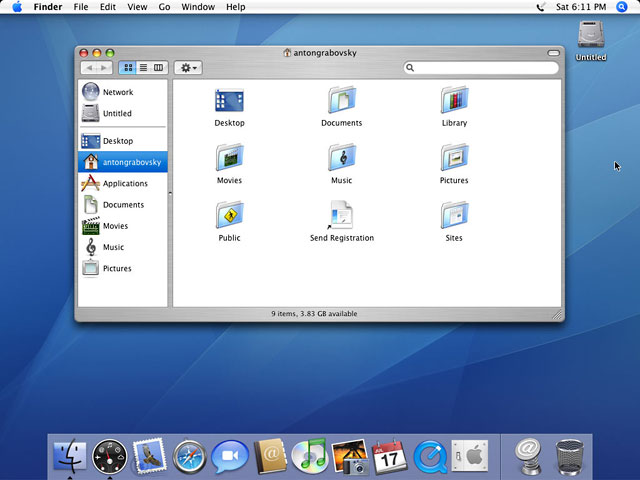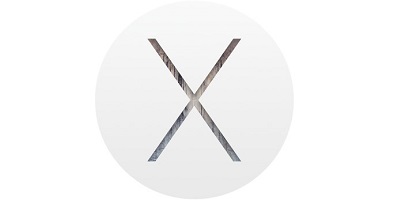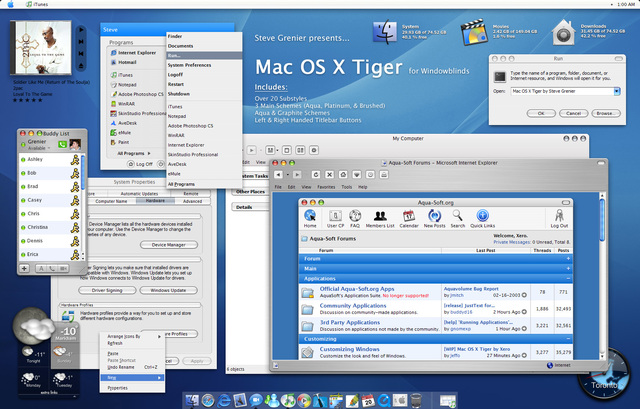Download Mac OS X 10.4 Tiger ISO, DMG installation files directly. Download the installation file for Mac OS X 10.4.6 Leopard PowerPC.iso. Download File OS X 10.4 Intel (Machine).
- Mac OS X 10.4 Tiger Retail DVD Item Preview tigerbox.jpg. Remove-circle Share or Embed This Item. DOWNLOAD OPTIONS download 1 file.
- Download Old Version of uTorrent for Mac for Mac OS X 10.4 Tiger (PowerPC).
If you are interested to experience an amazing operating system then Mac OS X 10.4 Tiger might be the one for you. Not only you can download Mac OS X 10.4 Tiger ISO or DMG but if you are having a slow or unstable internet connection then you might consider downloading the ISO file by using the torrent application by the given direct links.
File: mac_os_x_10.4_tiger.ISO
Size: 750 MB
Mac Os X 10.4 Tiger Dvd Download
Developer: Apple Inc. Download quicktime pro free mac.
Language: English
Released: April 29, 2005
Last update: October 26, 2007
Considering all those operating systems like Mac OS X Jaguar, or Puma in the past, Apple was not creating quite a good image. So, soon time they released Mac OS X Tiger to gain the trust of users and also to provide something which really worth their time. At the end of April 29, 2005, Apple released its fifth major release of the Macintosh operating system aka Tiger.
The operating system got popular in a bat of an eye, many users were liking it and it was booming in the market. It was one of those operating systems that was fighting with the legendary Windows XP.
Observing the results, we can say that Apple really did what they wanted to do. The operating system got popular within six months, as within 2 first weeks after the release more than 2 million copies were sold.
Due to Mac OS X Tiger, Apple covered about 16% of the market. It was one of the most secure, stable, compatible and high rated operating systems of its time.
Mac OS X 10.4 Tiger is the successor of Mac OS X 10.3 Panther and was succeeded by Mac OS X 10.5 Leopard.
Tiger is also one of the longest-running versions of Mac OS X OS. Out of all other Apple operating systems, Tiger OS is most successful of them all.
Many changes were made and new features like spotlight, safari, dashboard and a better user interface was added.
Tiger OS runs as Apple operating system for about 2 and a half years which is almost 30 months. And the last update for the OS was on October 26, 2007, where they released Mac OS X 10.4.11.
System Requirement
Remember that Apple released the operating system only in PowerPC editions. The operating system was shipped on PowerPC based macs as well as was also sold in retail stores separately. For using the Intel version, only one option was available which is to buy Intel-based mac. Here are the specs you that will make your computer to run Mac OS X Tiger.
A 300 MHz processor with built-in FireWire, a DVD drive, 3 GB of free storage and 256 MB of RAM.
Basically Mac OS X 10.4 Tiger were supported by Macintosh computer with PowerPC G3, G4 and G5
Features
Mac OS X 10.4 was a great update and most of the features were changed. Features like file search to improving graphics processing which Microsoft has spent years providing improved graphics with acceptable performance.
Safari 3 is available that has the feature to read built-in reader for RSS.
Dashboard will help you to manage all your files, folder, windows and activities easily. The old dashboard has been changed from dull and static interface to bright, vibrant dynamic interface. The new layer is based on HTML, CSS, and JavaScript. Tons of accessories are present which works as a desk accessories. These accessories aka widgets come in different versions like Weather, World Clock, Unit converter and numbers of others. Option to download other widgets is also valid and users can download them from the official online stores.
Spotlight is a full-text and metadata search engine which can search everything from files to iCal, or any text within PDF files. There is a newer version of Spotlight in Mac OS X Tiger which quite faster as compared to the old version of Macintosh OS. This was also used to build the concept Smart folders into the Finder.
It is now available for 64-bit applications while also works side-by-side with existing 32-bit applications as well. It is also one of the first Mac OS X that can be used on the Apple-Intel architecture processor.
A newer version of iChat AV 3 is available in Mac OS X 10.4 Tiger. It supports up to four participants in a single video conference and ten participants in an audio conference. The applications use the XMPP protocol for communication. An XMPP server is also known as iChat Server, this version of the server is also accessible in Mac OS X 10.4 Tiger Server.
Quick time 7 support is added which supports H.264/AVC codecs. The H.264/AVC codecs are better in quality as compared to others.
Voice Over is a new feature used to operate your operating system by using only your voice commands. It performs tasks like screen reading, reading inside a document or webpage, and mail messages.
The Mac Synchronizing feature has been improved. The synchronizing speed between two Mac OS X or Mac computers has been improved drastically.
Grapher allows the users to create 2D or 3D models whereas Quartz Composer (also a new feature) is used to process rendering graphical data.
A full-time dictionary based on Oxford dictionary is added.
Parental control is a handy feature used to limit access to certain applications, site or folders.
Mail 2 is a new version of mail application in mac.
Download Mac OS X 10.4 Tiger ISO File
It is safe to say that Mac OS X 10.4 Tiger, Apple’s most successful and best operating system. Both users and Apple admits as the operating system had a longer journey as compared to other versions, and many users are there who want to experience that version of the Macintosh operating system. So, here you can download Mac OS X 10.4 Tiger ISO file from the direct links.
File: mac_os_x_10.4_tiger.ISO
Size: 750 MB
Version: 10.4.11
Program Class: Operating System
Language: English
Released: April 29, 2005
Last update: October 26, 2007
Developer: Apple Inc.
Predecessor:Mac OS X 10.3 Panther
Successor: Mac OS X 10.5 Leopard
Setup Type: Offline Installer/ Full standalone setup
Blog 2020/5/7
<- previous |index |next ->
Here are some notes on how I set up an installation of OS X Tiger (10.4)on an emulated PowerPC G4 using QEMU,on a modern x86_64 Mac.
This setup was performed using QEMU 5.0.0 (obtained via brew install qemu).
Note: at some point during this process -cdrom /dev/cdrom seems to have stopped working, but -cdrom /dev/disk2 works.
Step 1: Initial installation
In this step we will format the disk and perform the initial OS X installation.
Download a copy of the2Z691-5305-A OS X Tiger installation DVDand burn it to a physical DVD.
Note: for some reason qemu does not seem to be able to boot .iso files of the OS X installation DVD (using -cdrom tiger.iso),but if you burn that .iso to a physical DVD and then use -cdrom /dev/disk2, it works.
Boot the DVD to verify it works:
If you see the grey Apple logo, the DVD is working correctly with QEMU:
Quit QEMU and create a 127GB QEMU disk:
Boot the install DVD with the disk attached and being the installation. QEMU will exit when the installer reboots.
When the installer reaches the disk selection screen, there will be no disks to choose from, because the disk has not been partitioned yet:
Start up Disk Utility:
'Erase' the disk to partition and format it:
Quit Disk Utility and the installer should now see the newly formatted partition:
The install will take quite some time (over an hour). When it completes, it will reboot, which will cause QEMU to exit (due to the -no-reboot flag).
At this point you may (physically) eject the installation DVD (from your host Mac).
Mark the disk as read-only to prevent any accidental writes to it (which would cause any snapshots based on this disk to become corrupt):

Step 2: User account creation, system updates
In this step we will create a user account and install all of the system updates.
Create a snapshot of the disk (think of this as forking the hard drive):
The system updates can either be installed using the Software Update utility (iteratively repeated across many reboots),or you can download and install them manually.


The manual route is quicker because some of the updates are bundled, and you don't have to wait on Software Update to detect which updates have / haven't been installed yet. Cuda 5.0 mac after effects download.
To install the updates manually,download (on your host Mac) item #29 (Tiger_Updates.dmg_.zip)from the 'Mac OS X for PPC' pageof macintoshgarden.org.
Unzip that file and convert the dmg to a DVD image:
We can now use tiger-updates.cdr as a virtual DVD with QEMU.
Boot the G4 and create a user account:
Note: if you plan on using Software Update rather than tiger-updates.cdr, you man omit the -cdrom tiger-updates.cdr line from the above command.
Note: this boot may take several minutes to get started.
This install was set up with user macuser and password macuser:
This installation was set up with the Central timezone:
Disable the screen saver and power-saving features:
Open up System Preferences and:
- Display & Screen Saver -> Screensaver -> Start screen saver -> Never
- Energy Saver
- Put the computer to sleep when it is inactive for -> Never
- Put the display to sleep when the computer is inactive for -> Never
If you did not use Software Update, open up the Tiger_Updates 'DVD' and install all of the updates:
If you go with the updates DVD route, make sure you run Software Update at the end just to be sure you've covered everything.
Mark the snapshot read-only to prevent accidental writes to it:
Step 3: Web browser, video player, text editor
Google slides download mac. In this step we will install TenFourFox, VLC and TextWrangler.
Create a snapshot of the disk:
TenFourFox is a fork of the Firefox web browser which is currently supported on Tiger/PPC.Their website links to the latest version,FPR22.
The latest version of VLCfor Tiger/PPC is 0.9.10,which is still available from their downloads page.
The latest version of TextWranglerfor Tiger/PPC is 3.1,available via Bare Bonesor macintoshgarden.org.
Strangely, no combination of using Disk Utility and hdiutil to create .dmg or .cdr images of TenFourFox.app seemed to work with Tiger:
Note: in retrospect, perhaps this was an APFS vs. HFS+ issue?
I resorted to burning TenFourFox, VLC, and TextWrangler to a physical DVD and passing it through to QEMU.
Note: even burning to a physical CD-ROM didn't work -- it had to be a DVD.
Drag the applications into /Applications.
Shutdown the G4 and mark the disk read-only:
Step 4: Xcode, Tigerbrew
In this step we will set up a development environment for building modern Unix software.
Create a snapshot of the disk:
The latest version of Xcode Tools for Tiger/PPC is 2.5,which is still available via Apple (search for 'xcode 2.5' at https://developer.apple.com/download/more/, requires login),or via macintoshgarden.orgfrom their Xcode page.
Again, I had to burn this to a physical DVD in order to use it with QEMU.
Boot the G4 and install the Xcode Tools:
Tigerbrewis a fork of Homebrewfor PowerPC Macs running Tiger or Leopard.
Open up a terminal on the emulated G4 and use the following commands to install Tigerbrew:
Also, change Terminal.app to spawn a 'login' bash shell:
- Terminal -> Preferences -> Execute this command ->
/bin/bash -l
Don't forget to mark the disk image read-only:
Using these QEMU hard drive images
At this point we've created a series of four chained hard drive images:
We can squash these images into a single, combined, stand-alone hard drive image:
We can then boot using that combined image directly, without the use of any snapshots.This is analogous to having a real Mac with a physical hard drive:

Or, we could treat combined.qcow2 as a 'golden master'and create snapshots based off of it, perhaps to try out some experimental tigerbrew packages:
Perhaps in experiment-1.qcow2 we try out gcc-7, and in experiment-2.qcow2 we try out llvm, etc.
Each of these snapshots can be used with the above command line as the -hda argument:
qemu-system-ppc .. -hda experiment-2.qcow2
We could even create further branches off of e.g. experiment-2.qcow2:
Perhaps we decide that experiment-2B.qcow2 was the keeper and the rest can be gotten rid of?
combined.qcow2 now contains the changes from experiment-2.qcow2 and experiment-2B.qcow2.
Thus far we've been branching off of the 'tip',but we could just as easily branch off several points in the snapshot tree.For example, if we hadn't merged the images into combined.qcow2,we could make a 'daily driver' snapshot for web browsing based off of 3-browser.qcow2,and a 'dev box' for doing development work based off of 4-tigerbrew.qcow2:
Mac Os X 10.4 Tiger Download
Let's say we accidentally hosed our dev box with a careless rm -rf /. Starting over with a new dev box is trivial:
Etc :)

Tiger Os X 10.4 Download
Resources:
